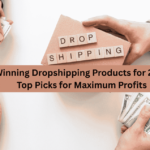Email marketing is key for e-commerce success, with a global value of $8.6 billion. It offers a big return on investment, with an average of $42 for every $1 spent. Good email campaigns boost customer engagement, conversions, and revenue.
Businesses use different emails like welcome, promotional, and abandoned cart emails. Personalized product emails can raise click-through rates by up to 26%. Abandoned cart emails can recover about 18% of lost sales. With over four billion email subscribers, email marketing is vital for reaching customers and boosting sales.
Building a strong email list and creating personalized campaigns can increase conversions and revenue. This guide will cover email marketing’s role in e-commerce success. We’ll look at the benefits of welcome, promotional, and post-purchase emails. We’ll also share strategies for a healthy email list and tips for effective campaigns.
Understanding Email Marketing for E-commerce: Core Fundamentals
Email marketing is key for e-commerce, with 86% of marketers finding it crucial. It’s vital to grasp the basics of email marketing. This includes its role in the sales funnel and how to build a strong email marketing setup. Good email marketing can bring big returns, with an average ROI of $42 for every dollar spent.
A solid email marketing plan helps businesses grow. It can nurture leads, boost sales, and keep customers engaged. For example, recurring shoppers spend 120% more than first-time buyers. Email automation makes campaigns better, more personal, and efficient.
Successful e-commerce emails have personalized subject lines, relevant content, and clear calls-to-action. Businesses with segmented email lists can see up to 760% more revenue from email marketing. Emails with personalized subject lines also get 50% more opens, showing the value of tailored content.
| Email Marketing Metric | Average Rate |
|---|---|
| Open Rate | 18% |
| Click-Through Rate | 3.4% |
By mastering these basics and using email automation, businesses can craft winning email marketing strategies. These strategies can drive sales, enhance customer engagement, and boost revenue. With the right strategy, e-commerce emails can be a powerful tool for success.
Creating a Data-Driven Email Marketing Strategy
To make a strong e-commerce marketing strategy, you need a data-driven approach. This means looking at customer data and how they act. It helps make email campaigns more personal and engaging. Email segmentation is key here, letting businesses send specific messages to certain groups.
Some big pluses of a data-driven email marketing strategy are:
- It boosts customer engagement and sales
- It makes emails more personal and relevant
- It makes email marketing more efficient and scalable
Using customer data, businesses can send targeted emails that work well. Email marketing brings in an average of $36 for every $1 spent. This shows it’s a vital part of any
Also, companies that use data-driven marketing see a return on investment (ROI) 4-8 times higher. This shows how important it is to use data in email segmentation and overall e-commerce marketing strategy.
| Metric | Description |
|---|---|
| Open Rate | Measures the percentage of recipients who open an email |
| Click-Through Rate (CTR) | Indicates the percentage of recipients who click on a link within the email |
| Email Conversion Rate | Reflects the percentage of recipients who complete the desired action after clicking through |
Email List Building and Management Techniques
Building a strong email list is key for boosting e-commerce sales and growth. To do this, segment users and send targeted campaigns. Start by making it easy for visitors to sign up for your list.
Offering discounts, special content, or loyalty programs can help. For example, giving a discount to those who abandon their carts can grab more leads. Also, offering content upgrades can boost conversions by up to 28.83%. These tactics can make your email list better and help drive sales.
To keep your list clean and up-to-date, regularly check and update it. This helps avoid spam and meets privacy rules. Use email verification tools and a double opt-in process. By focusing on list quality, your email marketing will get better, leading to more sales.
Opt-in Strategies for E-commerce Websites
- Offering discounts or promotions to first-time subscribers
- Creating content upgrades, such as e-books or webinars
- Implementing loyalty programs that reward subscribers with points or exclusive offers
By using these strategies, e-commerce sites can grow their email list. This leads to more sales and revenue through better email personalization and higher conversion rates.
Advanced Email Segmentation Strategies
Using advanced email segmentation is key for good email marketing. Businesses can make emails that really speak to their audience by using data and behavior. Email marketing best practices say to segment by demographics, how people engage, and what they click on.
Some top strategies for advanced email segmentation are:
- Demographic segmentation: targeting by age, gender, and location
- Engagement metrics: using open rates, click-through rates, and conversion rates to see what customers want
- Content interaction: seeing how customers react to email content to know what they like
These strategies help make email marketing better and get customers more involved. For instance, predictive analytics can spot customers ready to buy and send them special deals. Also, progressive profiling helps gather more data over time to get better at targeting.
Recent stats show that 77% of people like emails that are tailored to them. By using these strategies, businesses can get more people to engage, buy more, and grow their sales.
| Segmentation Strategy | Description | Benefits |
|---|---|---|
| Demographic Segmentation | Targeting campaigns based on age, gender, and location | Increased relevance, improved engagement |
| Engagement Metrics | Using metrics to determine customer intent | Improved targeting, increased conversion rates |
| Content Interaction | Analyzing customer interaction with email content | Improved personalization, increased customer satisfaction |
Mastering E-commerce Email Automation
Email automation is key to making email marketing better and more efficient. It helps e-commerce brands send more personalized messages. This leads to better customer engagement and higher sales.
Using email automation can really help your business grow. For every dollar spent on email marketing, you could see a return of $38. To get the most out of it, combining it with email segmentation is crucial. This approach can lead to more people opening and clicking on your emails.
- Recovering lost sales from abandoned carts through targeted follow-up emails
- Increasing engagement and conversion rates through personalized messages
- Enhancing campaign performance through advanced email marketing software and A/B testing
Mastering email automation and segmentation can drive more traffic to your site. In many cases, 15% to 20% of all site traffic comes from email campaigns. With an average conversion rate of 1.4% for email marketing in e-commerce, it’s clear that automation is essential.
Personalization Techniques for Higher Conversion Rates
Email personalization is key in e-commerce marketing. It lets businesses send tailored messages to customers, boosting the chance of a sale. By using data and behavior, companies can craft emails that speak directly to their audience. This approach leads to more sales.
For example, Zalando saw a 40% increase in basket sizes thanks to outfit suggestions. TUI also made a big impact, investing 300% more in campaigns after using real-time weather data for personalization.
Personalization can also cut down on cart abandonment. It encourages users to sign up or choose preferences for discounts. Plus, it reminds them about unfinished shopping, making them more likely to buy. Statista found that 63% of marketers see more sales thanks to personalization.
Dynamic Content Implementation
Dynamic content uses customer data to offer personalized content in real-time. This can include product tips, special deals, and messages tailored just for them. It makes the customer experience more engaging and relevant, leading to more sales and loyalty.
Product Recommendation Algorithms
Product recommendation algorithms suggest items based on what customers have shown interest in. They can be used in emails, on websites, and in apps. This way, businesses can make customers more likely to buy and keep them happy.
Customer Journey Mapping
Customer journey mapping shows how a customer moves from first contact to making a purchase. It helps businesses spot where they can improve and offer better experiences. This includes personalized emails, tailored messages, and product suggestions that fit what the customer wants.
Mobile-First Email Design for E-commerce
Most Americans own a smartphone, and about 5 billion people use the internet on mobile devices worldwide. It’s crucial to focus on mobile-first email design for e-commerce. Mobile-first email designs use a single-column layout for better reading on devices. This can greatly enhance the customer experience.
According to Bluecore, 59% of Millennials and 67% of Generation Z check their emails on smartphones. Using email marketing best practices like mobile-first design can boost unique mobile clicks by 15%, MailChimp found. To be seen on mobiles, email campaigns should put key messages where they’re easily seen.
Single-column layouts are becoming more popular in email design. This trend supports cleaner, more engaging designs for mobile users.
Some important stats for mobile-first email design include:
- 75% of Americans own a smartphone
- 15% of Americans only use mobile devices for internet access
- 23% of American adults don’t have a home computer
- About half of all email opens happen on mobile devices, Litmus reports
By following email marketing best practices and focusing on mobile-first design, e-commerce sites can better serve their customers. This can lead to more engagement and sales. As mobile use grows, optimizing email campaigns for mobile is key to staying competitive.
| Statistic | Percentage |
|---|---|
| Millennials using smartphones as primary email source | 59% |
| Generation Z using smartphones as primary email source | 67% |
| Increase in unique mobile clicks with mobile responsive email design | 15% |
Analytics and Performance Optimization
To succeed in e-commerce marketing, focus on analytics and performance. Track important email metrics like open rates and conversion rates. This helps spot areas for improvement and guides data-driven decisions.
A good analytics platform reveals trends in customer behavior. It can boost website engagement and improve campaign targeting. It also shows which marketing channels work best.
Key Metrics for E-commerce Emails
Some key metrics to track for e-commerce emails include:
- Average order value (AOV)
- Customer lifetime value (CLV)
- Conversion rate
- Cart abandonment rate
Tracking these metrics offers insights into customer behavior. For example, a high cart abandonment rate might mean improving the checkout process. A low average order value could suggest offering discounts or free shipping.
A/B Testing Methodologies
A/B testing is key for analytics and performance. It helps find the best subject lines, email copy, and calls-to-action. For instance, testing two subject lines can show which one gets more opens.
| Metric | Definition | Importance |
|---|---|---|
| Average Order Value (AOV) | The average amount spent by a customer in a single transaction | Helps businesses understand customer spending habits and optimize pricing and promotions |
| Customer Lifetime Value (CLV) | The total value of a customer to a business over their lifetime | Helps businesses understand the long-term value of customers and optimize customer retention strategies |
Analytics and performance optimization are vital for a successful e-commerce strategy. By tracking metrics, testing email elements, and making informed decisions, businesses can boost sales and revenue.
Emerging Trends Shaping the Future of E-commerce Email Marketing
The world of e-commerce is changing fast. New technologies and what customers want are leading the way. Businesses that keep up will see better engagement and profits.
AI and ML will make email marketing more personal. Brands will send content that really speaks to each customer. Interactive stuff like quizzes and polls will also become more common. This will make emails more fun and give marketers valuable feedback.
Expect emails to work better together across different channels. Zero-party data will help make customer experiences smooth and personal. With third-party cookies fading away, first-party and zero-party data will become even more important for personalizing emails.
Being green will matter more in email marketing too. Brands will send fewer emails but make them count. Using UGC and AI will make emails more relevant and effective. This will lead to more engagement and sales.







